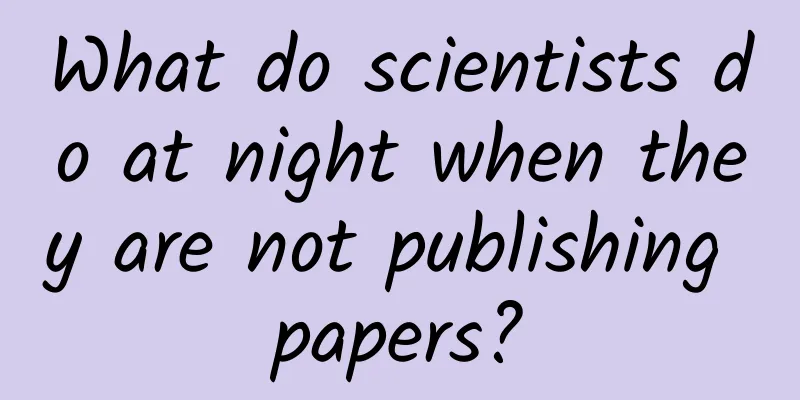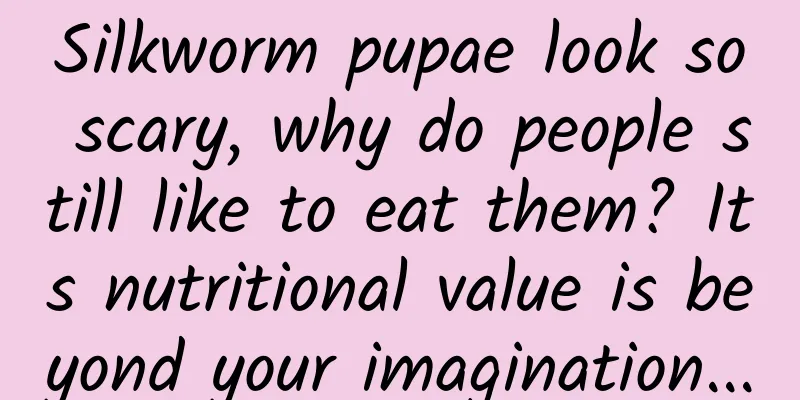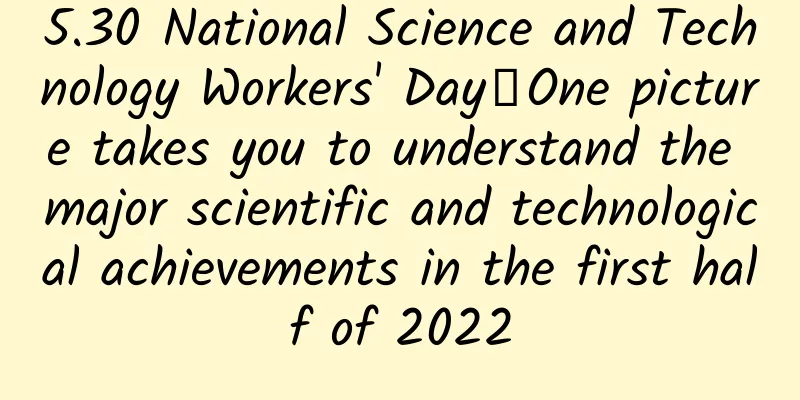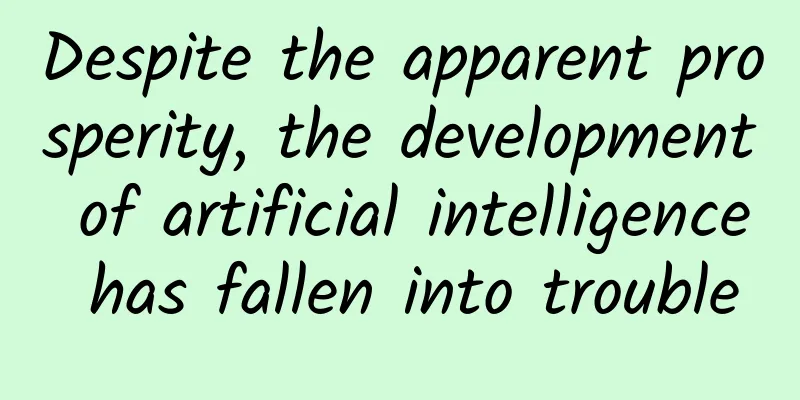What do scientists do at night when they are not publishing papers?

|
This article is a review article published in Genome Biology by Itai Yanai, Professor of Biochemistry and Molecular Pharmacology at New York University School of Medicine, and Martin J. Lercher, Professor of Bioinformatics at Heinrich Heine University Düsseldorf. The original title is Night Science, and the current title is added by the translator. The article borrows the concept of "night science" proposed by Nobel Prize winner François Jacob to tell the author's experience in exploring hypotheses and problems in the process of scientific research. Different from the orderly and logical "day science" in the public's view, "night science" refers to the exploration process before proposing a hypothesis - when the idea is not yet mature, science has another side that is jumpy, ambiguous, and blind. "Fanpu" previously published an article by the famous physicist Professor Xu Yihong (Anthony Zee) "Intuition and Guessing: Xu Yihong Talks about Physics Night Flight", which is similar to this article. Written by | Itai Yanai, Martin Lercher Translated by Zhou Shuyi If someone wakes us up in the middle of the night and asks, “How does science work?” we automatically rattle off, “You have a hypothesis, you make predictions, you test them against experimental data, and if the predictions don’t match the data, you abandon or modify the hypothesis…” We’re not wrong. But this narrative obscures the most exciting workings of science and ignores the most creative and arguably important part of our work—what François Jacob calls “night science.” Unlike “day science,” which focuses on the meticulous, logical testing of hypotheses through experiments, night science is the murky realm of potential hypotheses, where ideas are still unformed. In the daytime, we falsify hypotheses and see which ones hold up; in the night, we create hypotheses. The workings of night science are rarely documented because they seem abstract and ethereal compared to the orthodox scientific methods of logical deduction. But we believe that there is a deeper meaning behind the absurdity, and special research on it may broaden the dimension of scientific exploration. In a series of future articles, we will gradually uncover the unknown side of science. A failed study? Our research once hit a bottleneck. It was a painful time away from home and isolated from the world - it's a long story. We decided to spend a week trying our luck on a project that both of us were very interested in. The foundation of this project seems to be solid enough. In previous studies, we noticed that gene expression is very noisy. Therefore, although we initially imagined that genes would only be "turned on" when needed, we later gradually realized that in addition to being inevitably affected by the "functional" mechanism of natural selection, gene expression may even be so noisy that most of it is random. Genome evolution research is usually based on the perspective of functional selection and random drift, so it seems to be a good idea to treat gene expression in a similar way: it is subject to both inevitable and accidental factors. Itai Yanai (left), Martin Lercher (right) So 15 years ago, we came to Heidelberg to explore this idea. There are a lot of gene expression profiles stored in public databases. We downloaded the data with our laptops and sat in the cafe we often visited for a day, analyzing them - no, this was not the most painful part. We knew that there was something interesting hidden in the data, but we were not sure what we were looking for. The research direction would change in a day. Two people wrote the code separately, one in Matlab and the other in R. Then when we "checked the answers", the results were almost always different. We debugged and compared again until the results were consistent. But what did this result mean? A single result often had multiple interpretations, which was very confusing. So we started brainstorming again, asking ourselves: What is our question? Are these data really the key to natural selection on gene expression? Sometimes we carried out rigorous work with specific plans and questions to verify; sometimes we indulged in fantasy for a long time, and new questions and methods emerged in the meantime. This process is very different from the research methods we have learned: choose a field, choose a problem within the field, propose a set of possible alternative hypotheses, and then collect data to test them. A hypothesis may persist to the end and stand firm - a new theory is born. But this is not the case in the above study. Even the problem itself is unclear. We only have some observations at hand, and they don’t seem to be in line with expectations; in order to understand them, we try to illuminate the context with the light of evolution. What is the hypothesis? We have no hypothesis, not even a clearly defined problem. This is certainly not the scientific method. So, is this a failed study? We would like to say that this is not the case. On the contrary, it is a good example: there is a systematic gap from the "scientific method" to the scientific research that most of us experience. In fact, the depression of many new researchers may stem from this gap. Daytime Science & Nighttime Science François Jacob, who shared the Nobel Prize in Physiology or Medicine with André Lwoff and Jacques Monod in 1965, paints a picture that perhaps reflects the scientific process more fully than the current “hypothesis-driven” research paradigm. In his autobiography, Jacob divides scientific work into two modes, which he calls day science and night science [Appendix]. Day science is the science you read about in the news and learn in class at school, which can be summed up by the term “hypothesis-driven”. The men and women in white coats, holding pipettes and staring intently at computer screens are the epitome of day science. The day scientist is like a hunter who has a clear idea of the prey he is pursuing. But bright daylight is only half of the diurnal cycle. What about the nighttime half? Take a moment to examine the hypothesis you are testing. Did it come from nothing? And how did it gradually grow and tangle into shape? There is no single answer to this question. In many cases, we may not even have a logical answer, which is perhaps why it is excluded and avoided in most descriptions of the scientific process. As Jacob said, "Science wanders blindly in the dark night. It hesitates, stumbles, shrinks, sweats, and suddenly wakes up. It doubts everything, always trying to find itself, question itself, and re-energize itself. Night science is a workshop where various possibilities that hope to become the bricks and stones of the scientific edifice are carefully polished." In daytime science, we use the existing scientific consensus to test hypotheses and expand the boundaries of knowledge bit by bit with a seamless logical pace. However, if we rely only on the existing consensus and logic, those enclaves outside the continent of knowledge will be out of reach. That’s why we often have to take a leap into the world of night science, where ideas are only loosely connected and thoughts jump in a rambling association rather than in a logical step. We pull back from time to time to re-examine the merits of night science ideas in the daylight, and perhaps even subject them to rigorous hypothesis testing using the core methods of day science—and then jump back to the dream world to continue exploring. Of course, night science does not have to be done at night, and it is fine to test hypotheses after 10 p.m. But they are two very different modes of thinking—as different as day and night. Illustration of daytime and nighttime science. Daytime thinking follows a logical, step-by-step process, so it can only reach ideas that are closely adjacent to the current hypothesis (the isolated valley in the lower part of the picture). But we can jump out into the more open world of nighttime science, where intuition, association, inexplicable observations, and loose application of principles from other fields make leaps between ideas possible. When a new idea comes up, we can return to the bottom and rigorously test it using the daytime science method. Nighttime is the creative side Night science is an important part of science, and the creativity exhibited in this field is not only helpful for generating novel hypotheses, but also essential for developing new research methods. However, when we talk about science, we often describe it as a purely rational process, with scientists moving from one logical step to another. In fact, the science we know is not like this, and its night side is far less clean and rigorous. In order to cover up this messy side, with the encouragement of journal editors and reviewers, we carefully tell the story of our research, hiding the "night" side from the sight of our peers, as if the entire research was neatly organized in daylight from the beginning. Although we do not advocate that all scientific papers should be written like diaries, we are convinced that the stories of night science are not only beautiful, but also that studying them clearly will add an extremely important perspective to the training of young scientists. If we can share with each other how our hypotheses were generated, then the next time we embark on a night science exploration, we may be more confident and even refine some strategies to make this creative process more interesting and productive. This distinction between execution-oriented, methodical days and exploration-oriented, creative nights is not limited to science; it applies to any endeavor that requires creativity. In the visual arts, for example, one might distinguish between daytime and nighttime art. “Daytime” is the execution of an idea in the studio, while “nighttime” is the period before (or sometimes during) execution, when the artist develops an idea (e.g., the composition of a painting or sculpture). By the time the artist has an idea, much of the creative process may be complete. Similarly, in music, “daytime” is the sounding of a note or the arrangement of a piece, while “nighttime” is when inspiration strikes. In science, art, music, all of these fields, creative nighttime activity plays a large role. Almost any human activity requires some degree of creativity, so a minimum of “nighttime” exploration is probably an integral part of almost everything human. So what about our research experience in Heidelberg? No results were published and no valuable hypotheses were generated. Does this mean it wasn’t science? The answer is of course no. Was it a waste of time? No. Not only was that night science interesting, it also opened up a new territory under the cover of the night, which we often return to later to draw inspiration for project proposals and published papers. In this sense, night science is never in vain - we always broaden our horizons and reshape our thinking. These explorations help us stay on track to ask the right questions in future research - a crucial night science activity that we will explore in the next article in this series. Appendix: François Jacob’s Discussion on “Night Science” This paragraph is translated from the 1997 book Of Flies, Mice, and Men by French molecular biologist François Jacob. François Jacob (1920-2013) | NobelPrize.org “If you want to learn scientific methods from theoretical physicists, I advise you not to listen to what they say, but to pay attention to what they do,” said Albert Einstein. In the eyes of most people, scientific research is a purely logical process, cold, strict, and meticulous, just like the stern face of scientific textbooks or books on the history and philosophy of science. In this regard, philosophers endlessly discuss hypothetical deduction, talk about truth and "verisimilitude", and use a magnifying glass to analyze every detail of the scientific discovery process. At the same time, scientists also describe their work as a series of ideas and experiments with orderly and logical connections. In scientific papers, reason advances along the broad road, from darkness to light, never making mistakes, without doubts, and without dragging its feet. Only reason is flawless. However, if you look more closely at what scientists are "doing", you may be surprised to find that research actually includes both so-called "day science" and "night science". The arguments of day science fit together like gears, and the results are one and two, without any ambiguity. Its formal specifications are as amazing as Leonardo da Vinci's paintings and Bach's fugues. Walking through it, it feels like being in a French garden. We have insight into the scientific process, are proud of past achievements, and are full of confidence in the future. Day science moves forward in light and glory. On the contrary, night science wanders blindly in the dark night. It hesitates, stumbles, shrinks, sweats, and then suddenly wakes up. It doubts everything, always trying to find itself, question itself, and cheer itself up. Night science is a workshop where various possibilities that hope to become the bricks and stones of the scientific building are carefully polished. When hypotheses still remain in rough impressions and vague premonitions; when various phenomena are still isolated and unconnected; when experimental plans are ambiguous and chaotic, and the outlines are unclear; when thoughts move forward along the winding dark alleys, but often go astray - at the mercy of chance, ideas wander around in the maze, chasing a trace, a greeting, an unexpected connection from the numerous representations. It wanders like a prisoner in a cell, looking for a way out and a glimmer of light; it swings endlessly between hope and disappointment, excitement and melancholy. We have no way of knowing whether science can get out of the dark night and see the light of day, and whether the prisoners can regain their freedom. If it all suddenly became clear, it was a complete accident - a miracle, coming without warning, like a thunderbolt. It was not logic that guided the way forward, but instinct, intuition, the desire to understand and the passion for life. In the endless inner debate, countless hypotheses, comparisons, combinations and associations kept running in the mind. Finally, one day, the first fire was lit, the flames tore through the darkness, and in an instant, the light was dazzling and breathtaking, like a thousand suns. After the shock, there was a struggle with the old way of thinking, and the conceptual system that had been based on reasoning before now contradicted it. We have no right to assert that the new hypothesis can be transformed from its initial rough prototype to perfection and maturity, nor can we be sure whether it can withstand the test of logic and be accepted as a day science. Translator's words “It is generally believed that scientific research can be refined into theories simply by observing phenomena and accumulating experimental results,” Jacob wrote in Of Flies, Mice, and Men. “This is not the case. Decades of constant research may never produce any scientifically valuable results.” As Max Planck said, in addition to the hard facts, science also has a “metaphysical” part. This is often the realm of night science. Around night science, several authors describe a rather romantic journey with poetic touches. However, more often, modern science is seen as a highly competitive and daunting assembly line. Under the heavy pressure to publish, those indifferent, narrow-minded and pragmatic scientists may be more favored. I just hope that the scientific community can still leave some room for scholars like Jacob in the future. Compared with working during the day, they prefer flying at midnight, which is a vastness and abundance that reaches directly to the stars. As Jacob said: "Like literature and painting, science also has its style. It's not only about how to look at the world, but also about how to question the world." Special Tips 1. Go to the "Featured Column" at the bottom of the menu of the "Fanpu" WeChat public account to read a series of popular science articles on different topics. 2. Fanpu provides a function to search articles by month. Follow the official account and reply with the four-digit year + month, such as "1903", to get the article index for March 2019, and so on. Copyright statement: Personal forwarding is welcome. Any form of media or organization is not allowed to reprint or excerpt without authorization. For reprint authorization, please contact the backstage of the "Fanpu" WeChat public account. |
>>: This may be the only lizard with an oxygen tank
Recommend
[Smart Farmers] Satellite view of farmland | Spring Equinox has arrived, but farming continues and everything is renewed
March 21st marks the fourth of the twenty-four so...
If Android 'can't stay free', what can Google do?
[[237614]] The European Commission pointed out th...
How to promote and attract traffic to Xianyu? The practical method of attracting traffic to Xianyu with coupons is revealed!
Xianyu is now a traffic-generating platform that ...
Xing'an League Mini Program Development Company, how much does it cost to develop an educational mini program?
The factors affecting the quotation of Xing'a...
iPhone finally supports third-party apps? iOS 14.7 Beta 5 leaks
Recently, Apple officially pushed the iOS 14.7 an...
Xiaomi is actually the second largest wearable device company. Who is the first?
According to the latest report from market resear...
Able to be used for 50 years without charging, the nuclear batteries of the future will be amazing!
□ Li Chuanfu On May 8, EMR, a well-known market r...
Analysis of the nine search engine algorithms that SEOs must know!
Since the development of search engines, many alg...
1,100 new local infections! Omicron has another evolutionary branch, experts remind: This is crucial
From 0:00 to 24:00 on March 10, 555 new confirmed...
Lua 5.3.0 RC2 released
[[125071]] Lua 5.3.0 RC2 is now available for dow...
Integrate map support in Android applications based on MapBox
one, Introduction MapBox is an open source vector...
I bet you have never seen these colorful cicadas!
In addition to sweat and high temperatures, the s...
What are the functions of the Guangzhou Early Childhood Education Mini Program? How much does the early childhood education center mini program cost per year?
"I hope my son will become a dragon and my da...
Brand Pyramid: A Basic Path to Building a Brand
Written at the beginning: How to build a brand? T...
Shenzhen is competing fiercely with Silicon Valley, while Beijing is being left out by Silicon Valley
Editor's note: With the emergence of smart ha...









